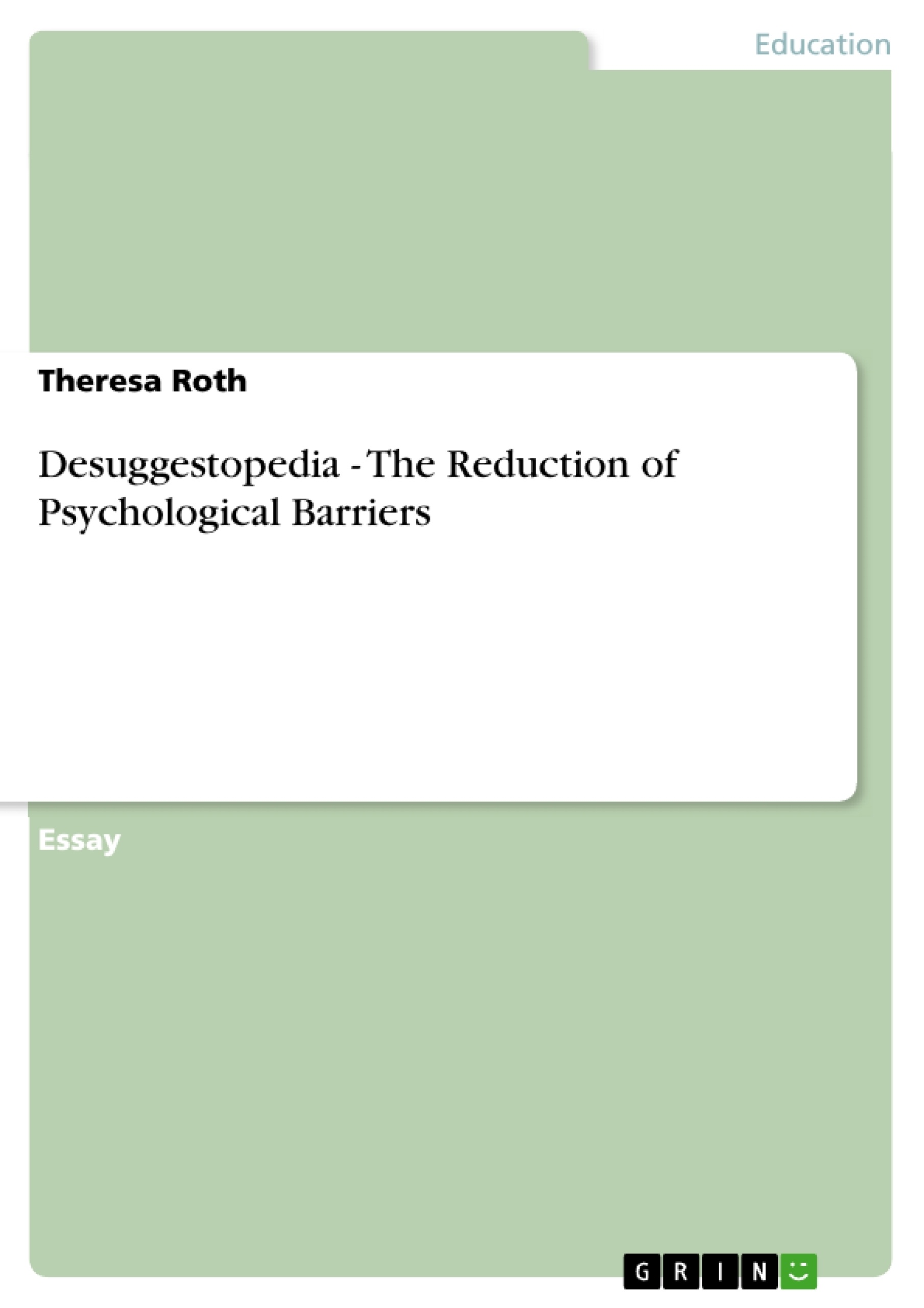Children learn at a different speed and rate. There is a huge variety of different teaching methods. One of these methods is invented by Georgi Lozanov. His desuggestopedia theory believes in the power of students’ feelings and puts the main focus on them. “The reason for our inefficiency […] is that we set up psychological
barriers to learning: We fear that we will be unable to perform, that we will be limited in our ability to learn, that we will fail.”
At first the change of the name has to be explained. The originator documents his theories on his present homepage:
[…] some not qualified person understood suggestion as a kind of hypnosis. But now with the term desuggestion it is easier to understand that it is not possible to think about hypnosis in suggestopedia. Only freedom of personality, inner freedom.
These are the reasons for changing the name. The only cause were the feelings and ideas of the people who deal with this term. The task of desuggestopedia is to help students to eliminate negative feelings. They do not have to be afraid of answering questions or being unsuccessful. Moreover, they should feel free in the whole learning process.
I agree with the opinion of this method that the reduction of mental barriers causes a strengthened self-confidence and prevents students from thinking about the fear of failure and this leads to a better attitude for learning.
With the help of the information and observations from the Diane Larsen-Freeman book I will present how the “psychological barriers” vanish.
Table of Contents
- Desuggestopedia
- The Reduction of Psychological Barriers
- Introduction
- Reduction of psychological barriers
- Conclusion
- The Reduction of Psychological Barriers
Objectives and Key Themes
This text explores the desuggestopedia method, a language learning approach created by Georgi Lozanov. The main focus is on reducing psychological barriers in students to enhance their learning experience and promote language acquisition. The objective is to examine the theory, principles, and techniques of desuggestopedia, highlighting its emphasis on positive emotions, relaxation, and creating a supportive learning environment.
- Reduction of psychological barriers in language learning
- The role of positive emotions and relaxation in learning
- The importance of teacher-student relationship and trust
- Techniques for desuggesting and creating a supportive learning environment
- The impact of art and creativity on language acquisition
Chapter Summaries
The first chapter provides an introduction to the concept of desuggestopedia and its origins. It discusses the shift in terminology from "suggestopedia" to "desuggestopedia," emphasizing the focus on eliminating negative feelings and fostering a sense of freedom in learning. The chapter also highlights the importance of reducing mental barriers to improve self-confidence and learning attitudes. The second chapter delves into the specific strategies for reducing psychological barriers. It emphasizes the positive effects of eliminating anxieties and promoting relaxation in the language learning process. The chapter explores various techniques employed in desuggestopedia, such as creating a positive learning environment, fostering trust between teacher and student, and incorporating activities like singing, dancing, and role-playing. The third chapter concludes the discussion by summarizing the key ideas and benefits of desuggestopedia. It highlights the unique emphasis on the importance of student feelings and the creation of a respectful and supportive learning environment. The chapter emphasizes the non-direct nature of desuggestopedia, where students experience learning through positive suggestions and unconscious processes.
Keywords
Desuggestopedia, language learning, psychological barriers, positive emotions, relaxation, teacher-student relationship, trust, creative activities, art, music, drama, learning environment, unconscious processes, language acquisition.
- Quote paper
- Theresa Roth (Author), 2005, Desuggestopedia - The Reduction of Psychological Barriers, Munich, GRIN Verlag, https://www.grin.com/document/181360




